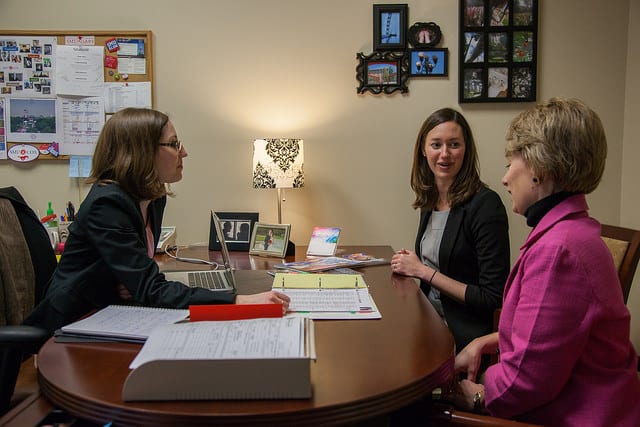 When SMU asks staff, faculty and students to share ideas on ways to help the University operate more efficiently, it’s not just for show. Some of the suggestions and observations already offered up are on their way to being implemented under SMU’s OE2C initiative.
When SMU asks staff, faculty and students to share ideas on ways to help the University operate more efficiently, it’s not just for show. Some of the suggestions and observations already offered up are on their way to being implemented under SMU’s OE2C initiative.
Since last fall, “more than 50 ideas have been submitted to the OE2C Office. This is in addition to ideas that were offered and discussed during interviews with staff, faculty and administrators last summer,” says Julie Wiksten, associate vice president for Operational Excellence. “Many of the ideas last summer became part of our major initiatives.”
Other ideas that were received “are being explored and may be recommended for Continuous Improvement projects. This will be a major ongoing focus of the OE2C Office,” Wiksten says.
Chris Smith, who works in SMU’s Office of Information and Technology, submitted a cost-savings suggestion to OE2C. He suggested changing the thermostat-controlled temperature set point in SMU buildings after experiencing a chilly 68-degree temperature in his office last April while outside temps were in the high 70s.
“Most employees adjusted by wearing more clothes to work – sweaters, jackets – although it was a near-summer temperature outside,” Smith says. “This led me to think – wouldn’t it save money and wouldn’t everyone be more comfortable if we could wear the same clothes inside and outside?”
Then it hit him: If the University were better at determining those times of year when inside and outside temperatures could be equalized, it would save in heating and cooling costs. He researched the idea, found support for it and submitted it.
Smith, who has worked at SMU for 22 years, says he was excited to learn OE2C was implementing his idea. “From what I read (when researching it), I believe it will save a good amount of money. Plus, our students and staff may be more comfortable indoors,” he says.
Cheryl Cothrum, an accountant in the Dedman School of Law business office, says it’s “great to know the University is listening to suggestions and implementing them.”
Like Smith, Cothrum also submitted a cost-saving idea to OE2C. She suggested eliminating a lengthy long-distance call log distributed monthly to campus offices.
“I’d receive the 3- to 4-inch document through campus mail every month, look it over to see if any faculty or staff owed money for personal calls, make copies, distribute the copies, then file it,” she says. “With everything going digital, I’ve felt for several years that the University could streamline the distribution of the long-distance bill — either by emailing or putting it on a shared drive.”
It’ll save time and money for SMU, she says.
“I’m not sure how much it saves the University in time and print cost, but I know every penny counts,” she adds. “I’m very frugal in my home life, so I guess that overflows to my work home.”
Ideas like Smith’s and Cothrum’s are exactly what the OE2C team will continue to look for, Wiksten says.
“We want your ideas,” she adds enthusiastically. “We welcome them from faculty, staff and students. And they don’t have to be ‘fully thought-out’ — they can just be suggestions or observations.’”
